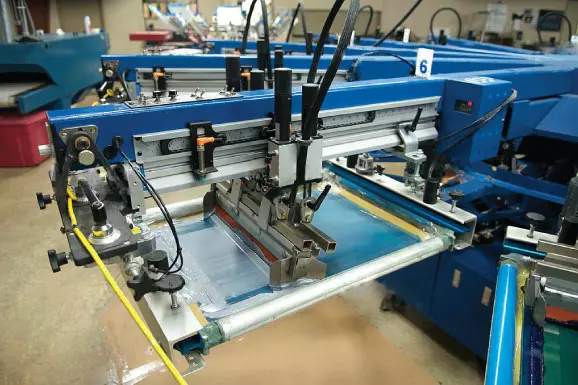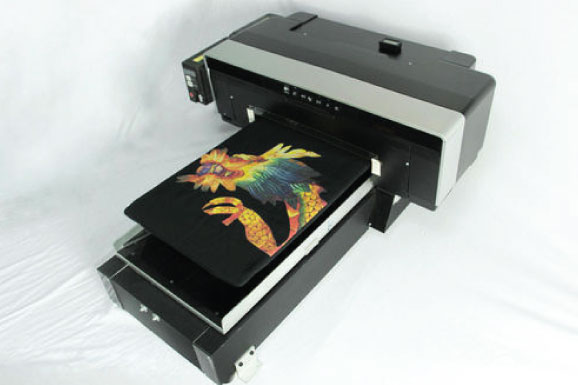
Direct-to-Garment Printing vs Other Printing Processes
What is DTG?
Direct-to-Garment printing is known as DTG. Using specialist inkjet printers, it is a technique for printing images and designs directly onto cloth. On t-shirts, hoodies, and other items of apparel, DTG printing is frequently used to print finely detailed designs. For small orders or one-off bespoke designs, DTG printing is more effective and economical because it does not require the fabrication of separate screens for each color in the pattern, as is the case with traditional screen printing.
Screen Printing
The process of “screen printing” entails making a stencil, or “screen,” and using it to apply ink to a surface, usually fabric or paper. A photographic emulsion is applied after stretching a mesh over a frame to create the screen. The intended design is then transferred to a film positive, which is then put over the screen and subjected to light, hardening the emulsion where the desired design shows. A stencil is left on the screen after the unexposed emulsion is wiped away.
In order to print, ink is forced onto the surface below through the stencil’s open spaces. Each color in the design needs its own screen to be printed on, and the ink is layered to make the finished image. The printed material is dried or cured after the ink has been applied, usually using heat.
Fabric, paper, glass, metal, and plastic are just a few of the materials that can be printed on with the adaptable printing technique known as screen printing. On t-shirts, posters, signs, and other promotional items, it is frequently used for printing. Screen printing is a preferred method for both artistic and commercial purposes since it can generate prints that are high-quality, long-lasting, and vivid.
Transfer Printing
Heat transfer printing entails applying the transfer medium to the surface with a heat press. The ink is more effectively adhered to the surface thanks to the pressure and heat used in the procedure.
Using sublimation transfer printing, a specific ink that transforms into a gas when heated can permanently connect with fabric by penetrating the surface of the material. Polyester fabrics and other materials with a high synthetic content are frequently printed with sublimation transfer printing.
Cold peel transfer printing entails applying the image to the surface, letting it cool, and then removing the transfer medium while still keeping the ink on the surface. In fabrics like cotton and polyester blends, cold peel transfer printing is frequently used for printing.
T-shirts, hats, bags, and other promotional goods are frequently printed with transfer printing. Given that it produces prints of excellent quality with vivid colors and fine details, it is a common technique for printing photographic or full-color pictures onto textiles.
Transfer printing is commonly used for printing on t-shirts, hats, bags, and other promotional items. It is a popular method for printing full-color or photographic images onto textiles, as it allows for high-quality prints with vibrant colors and fine details.
Cad Cut Vinyl
CAD Cut Vinyl, also known as heat transfer vinyl, is a type of vinyl material that can be cut into designs using a computer-controlled cutter. The vinyl is then transferred onto a surface, such as fabric or paper, using heat and pressure.
To create a design using CAD Cut Vinyl, the design is first created using graphic design software and sent to the cutter. The cutter then cuts the design out of the vinyl, creating a stencil. The stencil is then weeded, which involves removing the excess vinyl from around the design.
The stencil is then placed onto the surface to be printed and subjected to heat and pressure, typically using a heat press. The heat and pressure help to bond the vinyl to the surface, creating a permanent transfer. Once the vinyl has been applied, the stencil is removed, leaving the design behind.
CAD Cut Vinyl is commonly used for printing text and simple designs onto t-shirts, hats, and other textiles. It is a popular method for creating custom apparel, as it allows for precise cuts and the ability to create multiple colors in a single design. It is also a durable printing method, as the vinyl is resistant to fading and cracking.
Embroidery
Embroidery is a decorative process that involves stitching designs, patterns, or text onto fabric using a needle and thread. It is a versatile and traditional technique that can be used to create a wide variety of designs and styles, from simple monograms to complex, multi-color designs.
Embroidery can be done by hand, using a needle and thread, or with the help of a specialized embroidery machine. The machine uses a programmed digital pattern to stitch the design onto the fabric automatically. The design can be customized to include a variety of colors and stitch types, creating a three-dimensional effect that adds texture and depth to the finished product.
Embroidery is commonly used for decorating and branding a range of textiles, including hats, shirts, jackets, bags, and more. It is a durable and long-lasting decoration method, as the thread is resistant to fading and can withstand frequent washing and wear.
Embroidery is also a popular technique for creating personalized and customized items, such as monogrammed towels, team uniforms, and commemorative items. It is a versatile and stylish way to add a unique touch to any textile item.
Dye Sublimation
Dye sublimation is a printing process that involves using heat to transfer dye onto a surface, such as fabric or coated paper. The process involves printing a design onto a specialized transfer paper using dye-based inks. The transfer paper is then placed onto the surface to be printed and subjected to heat and pressure, causing the ink to vaporize and bond with the surface of the material.
The process of dye sublimation results in a high-quality print with vibrant colors and excellent color accuracy. Because the dye is infused into the surface of the material, rather than sitting on top of it like traditional printing methods, the print is less prone to fading and is more resistant to wear and tear.
Dye sublimation is commonly used for printing on fabrics, such as polyester, which have been specially treated to accept the dye. It is a popular method for printing on items such as t-shirts, sports jerseys, banners, flags, and other textiles. It can also be used to print on hard surfaces, such as ceramic tiles or aluminum sheets.
One of the advantages of dye sublimation is that it allows for the creation of highly detailed and complex designs, with no limit on the number of colors that can be used. It is also an environmentally-friendly printing process, as it uses water-based inks and produces minimal waste.
